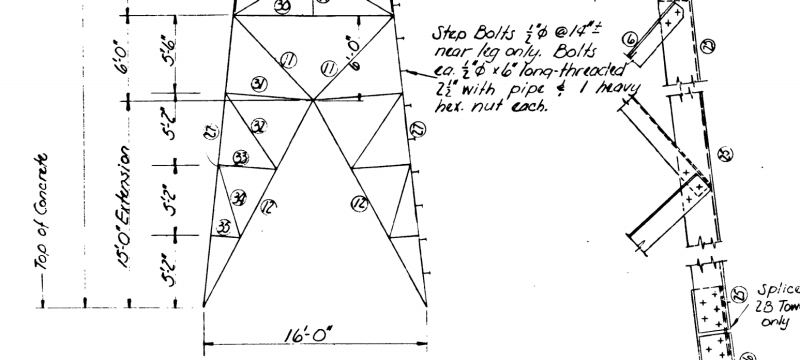PackRust
Structural
- Mar 23, 2021
- 3
Hello,

On the analysis of a very old tower, where the lower legs (member 27) are braced with redundant members (31-35) that also connect to the diagonals (member 12), we consider the diagonals as tension-only members due to the high L/r slenderness they have (between 300-400). If the tension-only member buckles, are the redundant members (31-35) connected to them still fully performing their function of bracing the main leg (member 27)? Would appreciate very much your take on this problem and any advice you can provide, I'm running the analysis on PLS-TOWER software.
Thanks

On the analysis of a very old tower, where the lower legs (member 27) are braced with redundant members (31-35) that also connect to the diagonals (member 12), we consider the diagonals as tension-only members due to the high L/r slenderness they have (between 300-400). If the tension-only member buckles, are the redundant members (31-35) connected to them still fully performing their function of bracing the main leg (member 27)? Would appreciate very much your take on this problem and any advice you can provide, I'm running the analysis on PLS-TOWER software.
Thanks


